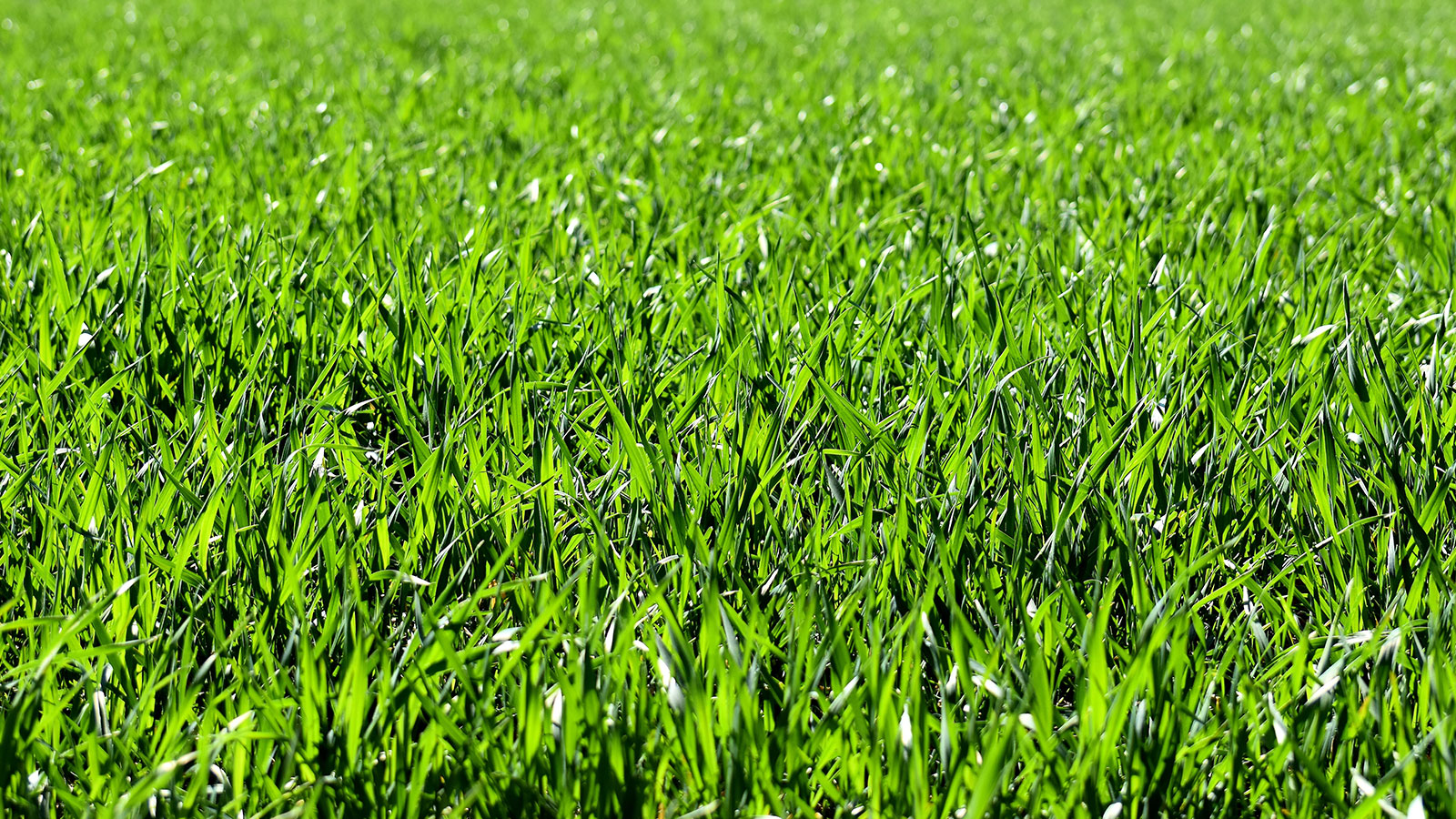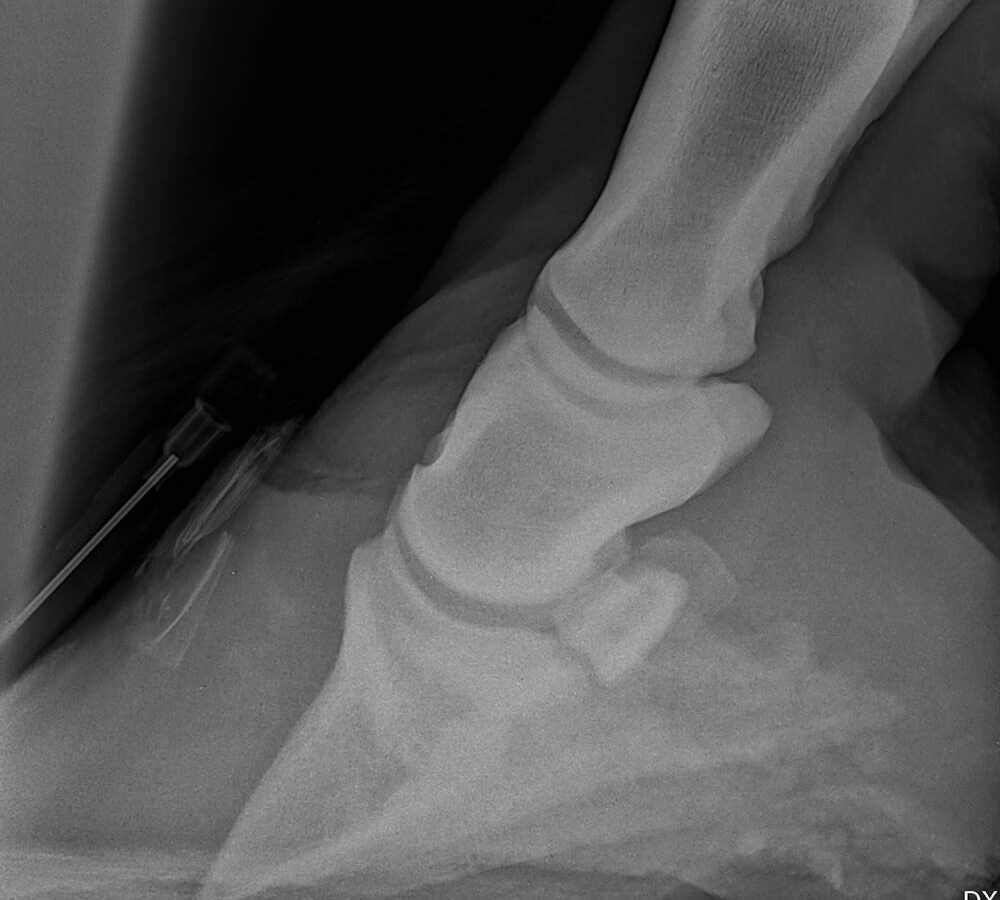With spring now upon us, the paddocks will soon be filled with lovely, sweet green grass, and animals and people alike will begin to enjoy the warming rays of the sun. But the arrival of spring also signals the time when we should be most concerned about our ponies and horses suffering a bout of laminitis.
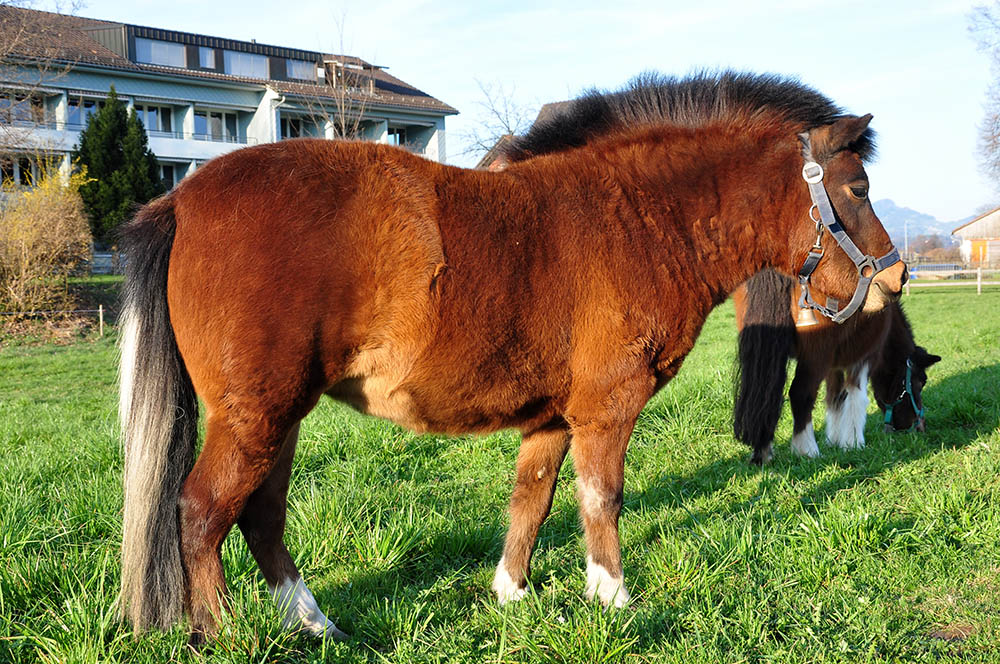
Equine Metabolic Syndrome (EMS) is one of two common endocrine diseases that can lead to laminitis.
As most people are aware, laminitis is not a disease a horse suffers, but rather a symptom of an underlying endocrine (hormone) imbalance that must be addressed to combat the issue. The two most common endocrine diseases that cause laminitis in the horse are Pituitary Pars Intermedia Dysfunction (PPID) and Equine Metabolic Syndrome (EMS).
PPID is a condition that affects a specific part of the pituitary gland and results in the excess production of a chemical (POMC) that is further broken down into the hormones ACTH, alpha=MSH and B-END. This was discussed in more detail in a previous edition of (Equestrian Life, Issue 50 September/October 2019) so I will not go into PPID in too much depth here. One of these hormones produced in high amounts is ACTH and this triggers an increase in the production of cortisol. Cortisol is a stress hormone designed to increase sugar levels in the blood so that energy is readily available to the horse in the event of a flight or fight scenario.
EMS is a disorder that primarily occurs when the body fails to regulate insulin levels appropriately (insulin dysregulation), and it is linked to a failure of muscle, liver, and adipose cells responding to insulin (insulin resistance). This dysregulation causes the pancreas to keep releasing more and more insulin, leading to hyperinsulinemia (high levels of insulin in the blood).
In normal horses, insulin controls the level of glucose in the blood; it is released when glucose is high and effectively pushes glucose into cells or into pathways that turn glucose into complex sugars or fats that can be stored. When the glucose levels drop below a base level, insulin production and release is turned off, allowing complex sugar compounds and fats to be broken down into glucose that can be immediately utilised as an energy source.
Chronically high levels of glucose in the blood, as can occur with PPID sufferers, initially cause high sustained insulin levels in the blood that eventually become uncontrollable, leading to insulin dysregulation. Once the pony or horse has insulin dysregulation, the sugar levels cannot be controlled effectively with normal levels of insulin, leading to hyperinsulinemia and insulin resistance. The pancreas will continue to produce and release insulin to drive the glucose level down, maintaining this hyperinsulinemia that we now know is the cause of laminitis.
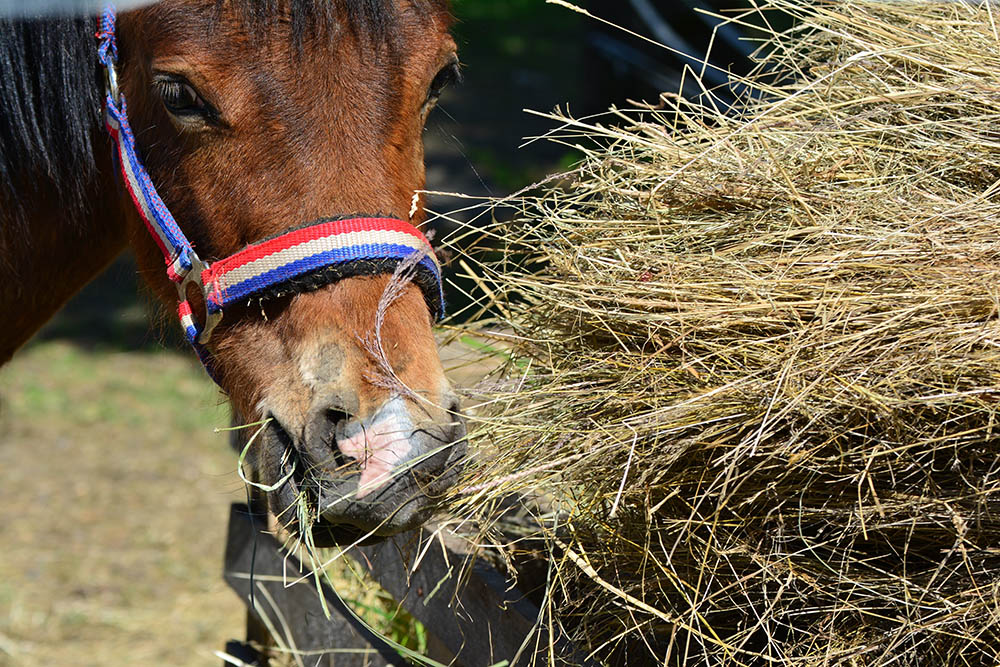
Generally, laminitis-prone horses and ponies should be fed a roughage-based diet comprised mainly of free choice hay with low non-structural carbohydrate (NSC) sugar content – ‘low sugar hay’.
“Spring grasses are renowned for
their high sugar content.”
DISCIPLINE & DEDICATION
Any spike in glucose ingested can trigger hyperinsulinemia and therefore the availability of lush spring grass to many horses and ponies will be sufficient to push EMS and PPID affected horses into a laminitic state. This is highly undesirable, and taking steps to prevent laminitis occurring is far more practical than waiting to treat them once they show signs of laminitis. This requires discipline and dedication on the part of the owner, as access to this sugar-filled grass must be severely limited if we are going to prevent laminitis occurring.
Non-structural carbohydrates (NSC) are the simple sugars and starches that are readily digestible and quickly absorbed via the small intestines straight into the bloodstream as glucose, causing a short spike in available energy. Spring grasses are renowned for their high sugar content and the ingestion of fresh spring grasses has often been associated with the development of laminitis, long before the link to hyperinsulinemia was discovered. EMS and PPID horses do not need to eat a lot of this fresh grass because the sugar levels in these grasses are so high and can easily trigger laminitis.
Structural carbohydrates (SCS) are fibre derived carbohydrates that rely on the bacteria in the hind gut to digest them in a much slower fashion than the NSC, therefore providing a slow, sustained source of energy that is utilised by the horse. Thus, when the horse has a diet that is predominantly fibre based, it avoids the sudden spike in blood glucose levels and therefore the release of large amounts of insulin.
The main goal for the owners of a horse with PPID and EMS should be to reduce the intake of non-structural carbohydrate in their diet to less than 10% to reduce the risk of laminitis. This translates into keeping a horse with either PPID or EMS off the spring grasses and maintaining them on a diet low in NSC. This can be a difficult concept for many owners with PPID horses to comprehend, particularly if their horse has lost weight over the winter as the perception can be that only fat horses get laminitis. Rather than increase the NSC in the diet by turning the horse out onto the good spring pasture, an owner is better to maintain the horse on a diet low in NSC and supplement the horse with SCS or some palatable oil to help put weight back on. It is easier for the owners of EMS horses to understand the need to stay off the spring grasses, as these ponies/horses are typically overweight and don’t need to have supplementation to improve their body score.
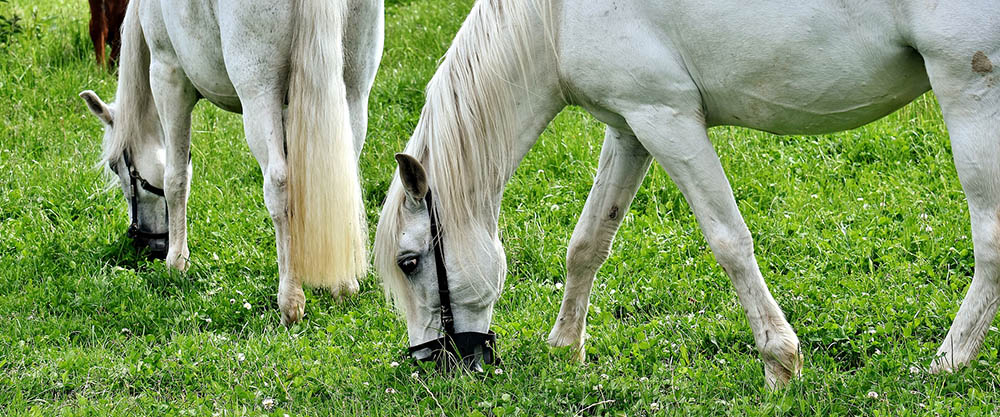
Grazing muzzles are a great way to restrict pasture access with restricting movement.
“Putting horses out,
even for short periods,
should not be done.”
GRAZING MUZZLES
In situations where the owner is keen to turn their horse out into paddocks with other horses that do not have a metabolic problem, the application of a grazing muzzle can be beneficial to allow social interaction between horses without the increased risk of the horse eating grasses high in sugar. It should be noted, however, that the muzzles must be well fitted, without holes or loose sides that allow the horse to manipulate the muzzle and get access to grass shoots. Owners may need to purchase several muzzles over the spring as the can easily be damaged by horses trying to remove them or manipulate them. Paddock mates can also destroy the muzzle, simply because they can! Putting horses out, even for short periods, should not be done, as often these horses take the opportunity to “guts” themselves because they know their access to pasture is limited, and this short time of intense grazing is enough of a trigger to cause laminitis.
An x-ray showing slight rotation of the pedal bone. An x-ray showing significant rotation of the pedal bone, both caused by a bout of laminitis..
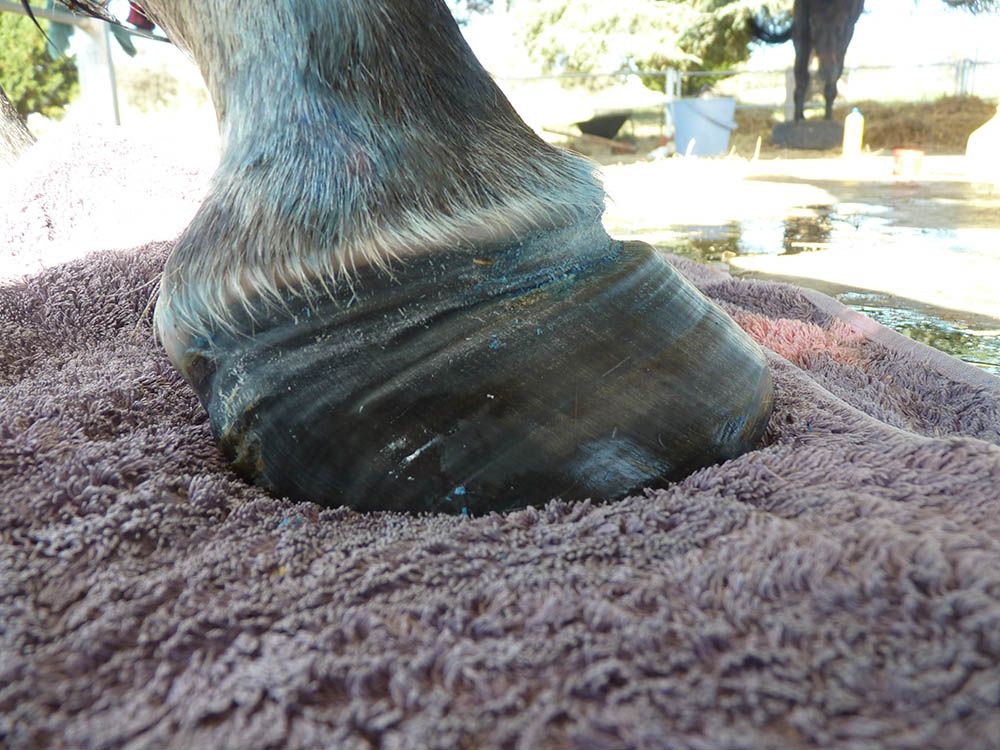
A horse that has suffered laminitis will require regular farrier attention and close dietary monitoring for the remainder of its life.
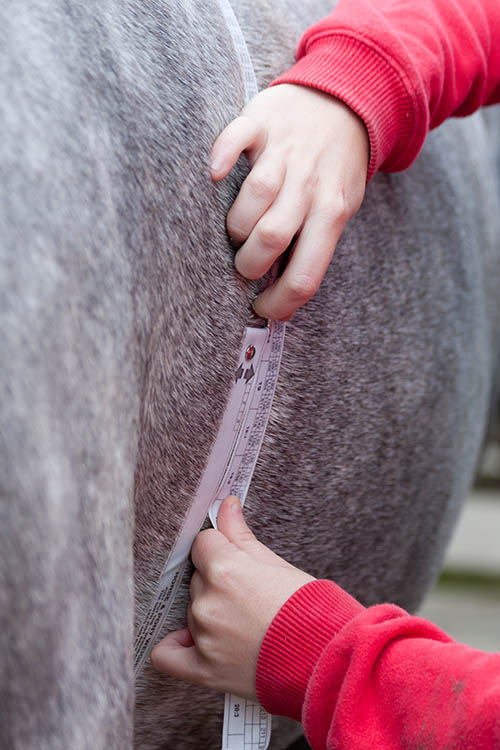
Keeping an eye on weight is important, but a horse does not have to be overweight to suffer a bout of laminitis. A simple blood test is a good idea if PPID or EMS are suspected.
In cases where the horse is on treatment for PPID or EMS, it is still not advisable to allow the horse free access to the new spring grass as treatments may not always offer 100% protection and access to high NSC will encourage medication failure.
Learning to detect digital pulses in horses that have had previous bouts of laminitis is something that should be encouraged. Digital pulses are easily felt once the owner is shown where and how to palpate them. The blood vessels that supply the feet pass over the back of each sesamoid bone and should be felt using the tips of one or more fingers over the inside and outside of the back of the fetlock. Avoid using the thumbs as our thumbs have a pulse associated with them and can be mistaken for the horse’s pulse. When these pulses increase, become stronger or throb, it can alert the owner that there is inflammation occurring in the foot before the horse is visibly lame. By regularly assessing the digital pulses as the weather starts to warm and the grasses start to shoot, the owner can be alerted to the need to remove the pony/horse off the pasture and into a yard or poorly grassed enclosure.

Prevention is far better than treatment with laminitis; keeping an eye on weight is important, but a simple blood test is also a good idea of PPID or EMS are suspected .
Coming into the spring, it is also sensible to have the farrier assess your horses’ feet, so it is easier to monitor for evidence of laminitis, removing the need to blame “long toes or cracked hooves” for lameness if it occurs.
If in doubt of your pony’s or horse’s status with regards to metabolic conditions such as PPID or EMS, have your horse assessed by a veterinarian as we come into spring. Most of the time, an assessment can be made using a simple blood test and, although sometimes a more dynamic assessment is required, the effort to check is worth the exercise as it can prevent the horse suffering unnecessarily. Unfortunately, it is often not until the horse suffers an episode of laminitis that the owner is aware there is a problem, and this is what we need to avoid. EQ
YOU MIGHT ALSO LIKE TO READ THE FOLLOWING BY DR MAXINE BRAIN:
Working Together for Best Outcomes – Equestrian Life, August 2022
What Constitutes an Emergency – Equestrian Life, July 2022
Peri-Tarsal Cellulitis Calls for Quick Action – Equestrian Life, June 2022
Sinusitis: Not To Be Sneezed At – Equestrian Life, May 2022
Japanese Encephalitis: No Cause For Alarm – Equestrian Life, April 2022
Hernia Learning Curve – Equestrian Life, March 2022
Osteochondromas: Benign But Irritating – Equestrian Life, February 2022
Don’t Forget the Water – Equestrian Life, January 2022
Understanding Anaesthesia – Equestrian Life, December 2021
A Quick Guide to Castration – Equestrian Life, November 2021
Caring for Mammary Glands – Equestrian Life, October 2021
Sepsis In Foals – Equestrian Life, September 2021
Understanding Tendon Sheath Inflammation – Equestrian Life, August 2021
The Mystery of Equine Shivers – Equestrian Life, July 2021
Heads up for the Big Chill – Equestrian Life, June 2021
The Ridden Horse Pain Ethogram – Equestrian Life, May 2021
The Benefits of Genetic Testing – Equestrian Life, April 2021
Heavy Metal Toxicities – Equestrian Life, March 2021
Euthanasia, the Toughest Decision – Equestrian Life, February 2021
How to Beat Heat Stress – Equestrian Life, January 2021
Medicinal Cannabis for Horses – Equestrian Life, December 2020
Foal Diarrhoea Part 2: Infectious Diarrhoea – Equestrian Life, November 2020
Foal Diarrhoea (Don’t Panic!) – Equestrian Life, October 2020
Urticaria Calls For Detective Work – Equestrian Life, September 2020
Winter’s Scourge, The Foot Abscess – Equestrian Life, August 2020
Core Strengthening & Balance Exercises – Equestrian Life, July 2020
The Principles of Rehabilitation – Equestrian Life, June 2020
When is Old, Too Old? – Equestrian Life, May 2020
